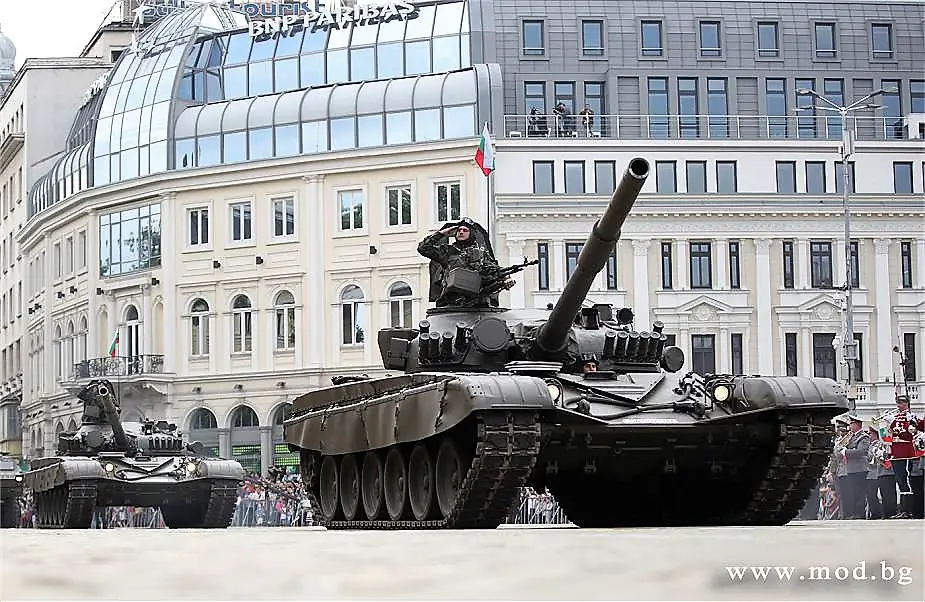The Biden administration will work with allies to transfer Soviet-made tanks to bolster Ukrainian defenses in the country’s eastern Donbas region, a U.S. official said on April 1, echoed by Helen Cooper in The New York Times. It comes in response to a request from Ukrainian President Volodymyr Zelenskyy. Reports are indeed emerging that the U.S. will broker transfers of T-72 tanks from NATO countries’ Soviet-era stocks to Ukraine, Stetson Payne reports in The Drive.
Follow Army Recognition on Google News at this link

Bulgarian T-72 Main Battle Tanks (Picture source: Bulgarian MoD)
Helene Cooper in the New York Times first reported on this potential transfer. While the Ukrainians inherited many T-72s after the Soviet Union’s collapse, its army has favored the T-64 and T-80, alongside T-72s. These tanks have faced down the Russian Army's own T-72s, as well as other types, hundreds of which rolled over the border nearly six weeks ago.
The T-72 is a relevant choice for Ukraine not just due to availability but also due to its widespread use and ease of maintenance, Stetson Payne writes. The relatively simple design is highly supportable in the field without advanced training and Russia has already dumped many T-72s into Ukrainian hands. There are many more that have been damaged but are still a good spare parts source. Ukraine also has a lot of experience locally upgrading the type. As such, bolstering this already growing and readily sustainable force seems like a highly logical move.
Hence, a transfer of T-72s to the Ukrainian army is possible. The move, if accurate, no doubt represents an escalation in weapons transfers to Ukraine, Stetson Payne comments. Of NATO’s T-72 owners, many are in reserve or are actively being replaced by more capable and far more modern western tanks. Bulgaria, the Czech Republic, Hungary, Poland, and Slovakia all operate the tank and have some in storage. Unlike fighter jets that could only be transferred with an elevated risk of escalation and a huge logistical effort, main battle tanks can cross the border fully assembled and ready to go via trains, trucks, or motoring on their own power.
Most of the NATO countries having T-72s are improved Soviet export models of the T-72M standard, not quite up to par with the heavily modernized T-72B3 versions used by the Russian Ground Forces, Stetson Payne underlines. The Russians’ latest models feature improved armor, fire control, and self-protection systems over the older exports. But with an avalanche of media showing destroyed Russian tanks as an indicator, the Ukrainians are more than capable of taking out Russian armor. How many of those kills were tank-to-tank is unknown.
The most obvious potential supplier is Poland. Its army is equipped with nearly 400 T-72M1s as of 2020 with all of them undergoing modernization. Alongside those are the more than 200 Polish PT-91 Twardy tanks. The PT-91 features an improved digital fire control system over original T-72s, as well as proprietary explosive-reactive-armor (ERA), and an improved powerplant. Some of the PT-91s are newly built while others were upgraded from T-72M1s. Not only does Poland have tanks on hand to transfer, but they also have replacements on the way.
Bulgaria, the Czech Republic, and Slovakia all operate similar T-72M variants with some local modifications. However, none of them have more than 100 units active and only Bulgaria has a sizable reserve with reportedly 250 in storage. But the Czech Republic is sending 56 Pbv-501 infantry fighting vehicles, themselves upgraded former East German BMP-1s, to Ukraine in a deal announced on April 1.
Hungary, like Poland, has a sizable reserve with about 130 T-72M1s inactive and 34 still in use. At the same time, they’re awaiting delivery of 44 Leopard 2A7s from Germany to replace some of their Soviet-era equipment. But Hungarian Prime Minister Viktor Orban (whose party has just won a new election) has had warmer relations with Moscow than most NATO members, so their transfer is less likely.














